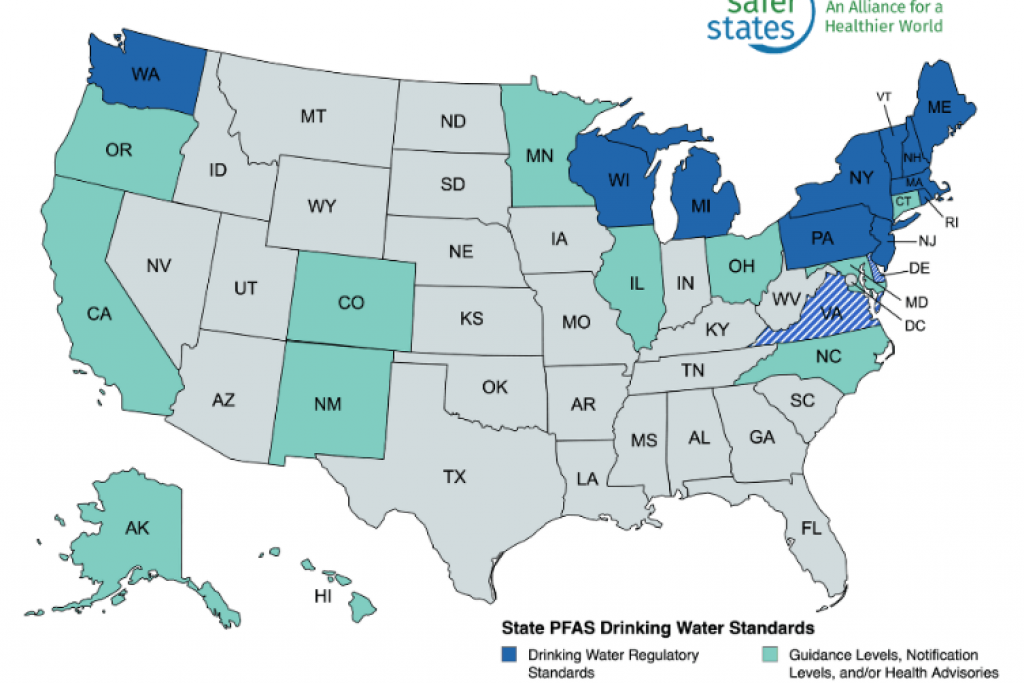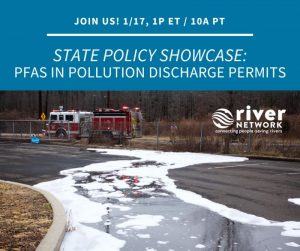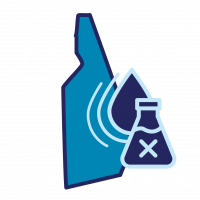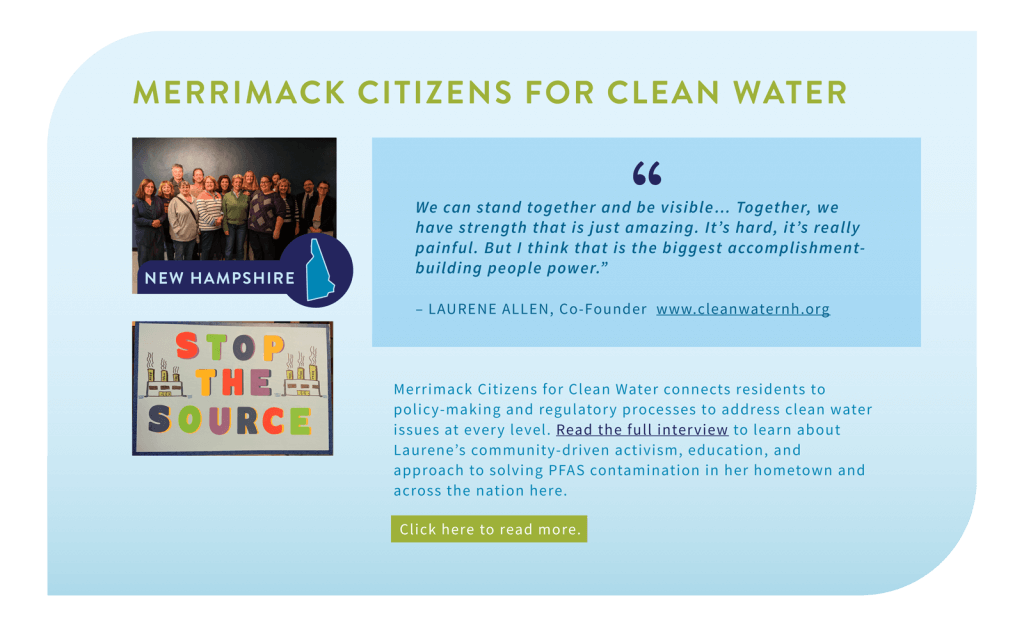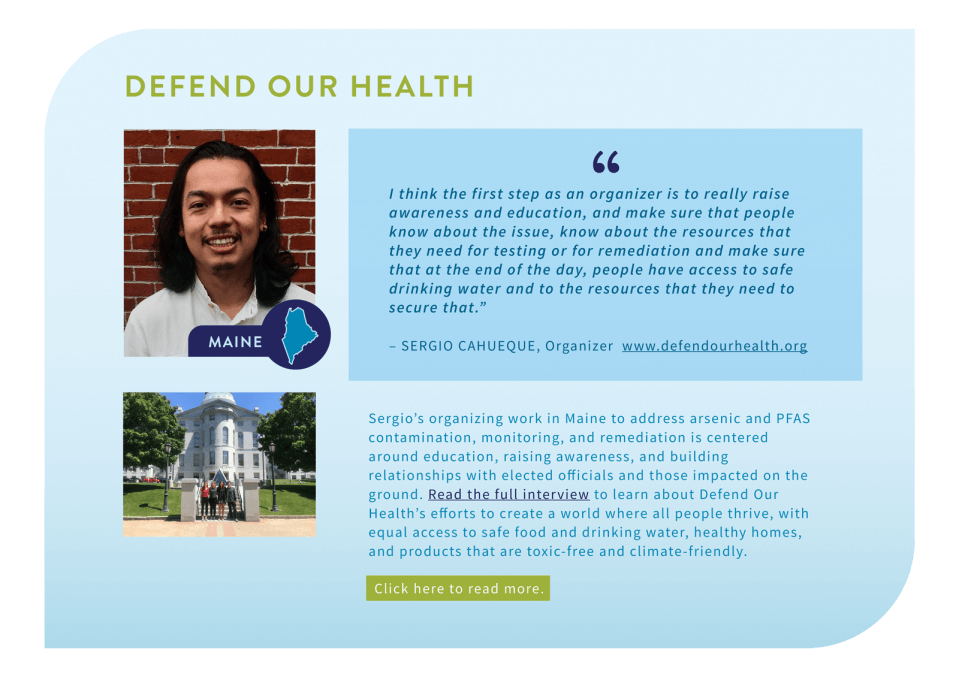State Action on Regulating PFAS
What’s the Issue?
Per- and polyfluoroalkyl substances (PFAS) are a group of over 15,000 man-made chemicals. These chemicals are used in non-stick cookware, firefighting foam, water resistant clothing and furniture, and many other common products. Often referred to as “forever chemicals” as they do not breakdown easily and accumulate over time, PFAS can enter humans through food, water, and air. An estimated 200 million Americans drink water that has been contaminated with PFAS, and a 2023 USGS study estimates that 45% of the nation’s tap water has one or more types of PFAS.
In April 2024, US EPA finalized a National Primary Drinking Water Regulation (NPDWR) that established Maximum Contaminant Levels (MCLs) for six PFAS in drinking water, marking the first time the federal agency has created legally enforceable levels for any PFAS in drinking water. Through this regulation, public water systems will monitor for the six PFAS, reduce PFAS in drinking levels if above the MCLs, and must notify the public of PFAS levels.
Protecting Against PFAS at the State Level
Policies regarding PFAS regulation are becoming increasing prevalent at the state level, with 302 introduced policies in 34 states and 146 adopted policies in 29 states according to Safer States. A Penn State Law Review Study conducted in 2021 suggests that legislative and administrative actions of New Jersey, Michigan, Minnesota, and New Hampshire are the strongest state level efforts in addressing PFAS contamination. Policies that specifically address PFAS in drinking water include enforceable drinking water standards (MA, MI, NH, NJ, NY, VT, and ME) and proposed standards (AZ, IA, KY, and RI). Numerous states have adopted guidance and/or notification levels for PFAS in drinking water and others have passed legislation to reduce the presence of PFAS from the source, banning products such as firefighting foam and packaging containing PFAS. Maine became the first state to pass legislation in 2021 banning sales of products containing PFAS, except for unavoidable use, which goes into effect in 2030. In 2023, Minnesota passed a law banning all non-essential uses of PFAS.
Examples of State Policy
- New Jersey was the first state to set a maximum contaminant level (MCL) for any kind of PFAS. Amendments to the New Jersey Safe Drinking Water Act rules apply to public community and public non-community water systems. PFOA maximum contaminant level (MCL) is set at 14 ppt and 13 ppt for PFOS in drinking water. Treatment for emerging contaminants is now a priority for State funding, and water systems may access low interest loans through the New Jersey Water Bank to offset costs for compliance.
- Michigan’s PFAS Action Response Team (MPART) consists of officials from 10 different state departments. MPART researches sources and locations of PFAS contamination to protect drinking water and alert the public of high levels of PFAS. MPART was permanently established through Executive Order 2019-3 by Governor Whitmer in 2019. In 2020, Michigan Department of Environment, Great Lakes, and Energy (EGLE) adopted a ruleset limiting seven PFAS chemicals in drinking water. The levels are set at 6 ppt for PFNA, 8 ppt for PFOA, and 16 ppt for PFOS. The Great Lakes PFAS Action Network (GLPAN), a coalition of impacted communities and environmental and conservation organizations developed a policy agenda of administrative and legislative actions to take.
- New Hampshire’s 2020 House Bill 1264 set the maximum contaminant levels for certain perfluorochemicals in drinking water, established a PFAS fund and programs and made an appropriation requiring insurance coverage for PFAS and PFC blood tests, and expanded the statute governing ambient groundwater quality standards.
Lessons from the Network
Additional Resources
- Environmental Protection Agency (EPA). PFAS Strategic Roadmap for 2021-2024.
- Environmental Protection Agency (EPA). US State Resources about PFAS.
- Environmental Protection Agency (EPA). Benefits and Costs of Reducing PFAS in Drinking Water. (2024).
- Safer States. PFAS Tracker. (Includes adopted and introduced policies.)
- Silent Spring Institute. PFAS Exchange. (Shows a map of contaminated sites and where organizations are working for health and environmental protections.)
- State of Wisconsin. Wisconsin PFAS Interactive Data Viewer.
- Environmental Council of the States (ECOS). Processes and considerations for setting state PFAS standards. (2021)
- Green Latinos. “Forever toxic chemicals” in our water: PFAS response toolkit. (2021)
- Leighton Paisner, B.C. State-by-state regulation of PFAS substances in drinking water. (2021)
- Moyer, M. Penn State Law Review. ”Forever Chemicals”: PFAS Contamination and Public Health. (2021)
- Rockefeller Institute of Government. PFAS Policy Dashboard. (2022)
- PFAS 101: Everything you need to know about ‘forever chemicals’. (2023)
- River Network. Funding to address PFAS in the SRF Advocacy Toolkit. (2023)
- Environmental Working Group. Interactive map of PFAS contamination sites. (2024)


